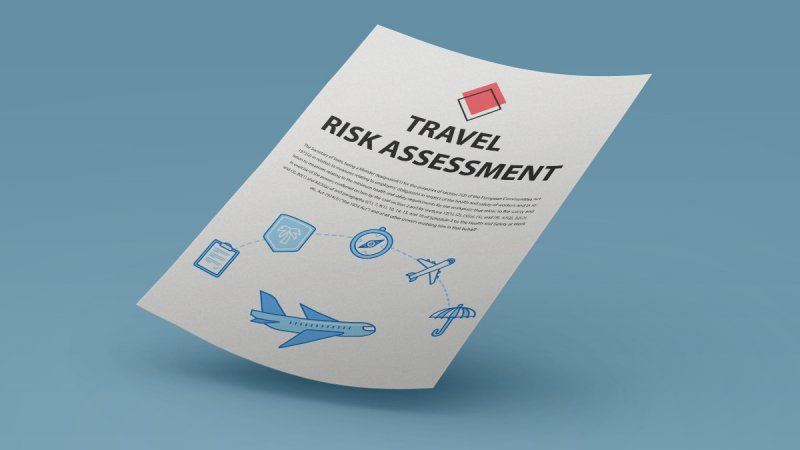Business travel, like any work activity, comes with some level of risk. Whether the trip is a car journey from one company office to another within the UK or extended travel to a major trade show in another country, employers have a duty of care towards their staff just as they would if they were on their premises.
There are lots of personal accounts on the internet about corporate travel gone wrong – hotels that turned out to have infestations, travel delays stranding passengers in unsafe areas – but the majority of business trips happen without a hitch, and all staff return safe and healthy. Risk assessments increase the likelihood of being in the latter camp rather than starring in another internet horror story.
Why Conduct a Travel Risk Assessment?
Risk assessment is a vital tool in identifying hazards, making sure control measures are in place to avoid or minimise risks and ensuring employees are aware of the risks they might face. Just as with fire risk or hazardous substances risk assessments, travel risk assessments can be a useful way of noticing potential problems that might otherwise have gone undetected, and removing that portion of the trip if necessary; for example, if a meeting is taking place in an area with a poor safety record, it might be possible to rearrange the trip so that the meeting takes place elsewhere.
Employers are only expected to plan for events that are foreseeable. Though every effort must be made to consider all angles and likely scenarios, there are times when something so unlikely happens that it couldn’t reasonably have been thought about in advance. Unfortunately, this is part of the risk of business travel.

What Should be Included in a Travel Risk Assessment?
Travel safety training and thorough research into the destination in questions are important first steps to take. When the risk assessment is being conducted, it helps to consider the following categories:
Accommodation and Transport – A large amount of most business trips will be spent travelling and this is where many of the hazards will be found. Unfortunately, airports and train stations are often high-risk areas for theft, so there are potential issues before the journey even begins. Depending on the location, public transport may be unreliable or unsafe, and driving could be an issue because of poor road infrastructure, unfamiliarity with driving laws and customs, or vehicles that haven’t been maintained well. Any issues should be accounted for in a risk assessment.
Accommodation needs to be carefully considered in advance, and not only in terms of pricing and location. Safety issues such as fire risks need to be considered, as well as the water and food hygiene of the hotel. Stomach problems are one of the most common reasons business trips are derailed, and proper research into the safety of food preparation can make this less likely.
Work Activities – Anything the employees may do on a corporate trip as part of their job is subject to the same risk assessment standards as it would be if they were in the workplace. Will they be exposed to hazardous substances or operating dangerous machinery?
Health – The physical safety of employees on business trips is often considered but their health can sometimes be neglected. Travel, especially if it’s regular and longer than a day or two, is associated with health problems that can build up over time. Hazards local to the destination have to be considered too, and employees should be up to date with all the necessary vaccinations.
Destination – The UK government publishes travel advice for every country in the world on their website. This is a good starting point for research into the cultural, political, environmental and legal issues associated with that country, their entry and visa requirements and any government advice restricting travel to that area. Travel safety training for the individual employees can help them work out what to look out for in advance of their trip.
Individual – Do any of the employees going on the trip have characteristics or circumstances that might put them at particular risk? Disability, illness and mobility issues might all have this effect. They might also belong to a group that faces greater discrimination or legal barriers in other countries. If one of your travelling employees is a wheelchair user, for example, extra care would need to be taken to ensure they’re able to access their accommodation and any meetings they need to attend; they might also need alternative transport arrangements at some parts of their journey.
This is by no means an exhaustive list but it provides a good grounding in what an effective travel risk assessment should include. Every business trip is different, and the travel risk assessment should be updated each time.








